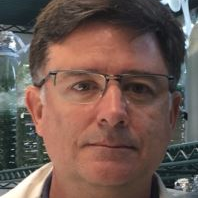Extraction, Exploitation and Application of Algae Biomass
A special issue of Processes (ISSN 2227-9717). This special issue belongs to the section "Biological Processes and Systems".
Deadline for manuscript submissions: closed (20 April 2024) | Viewed by 40102
Special Issue Editors
Interests: physiology; biochemistry; transformation and potential applications of algal biomass produced under different cultivation approaches; including the development of biofiltration systems using algae; he has got a wide experience in cultivation; under controlled conditions; of marine macro-; microalgae; and cyanobacteria at different laboratory- and pilot-scale systems
Interests: bioprocesses; algae biotechnology; waste recycling
Special Issues, Collections and Topics in MDPI journals
Special Issue Information
Dear Colleagues,
In the last 25 years, the highest percentages of algal biomass produced and processed by the industry were mostly generated through cultivation activities. Previous overexploitation and, nowadays, control mechanisms in a scenario of climate change make natural populations difficult to exploit in a sustainable way. This fact drives to the necessity to develop algae culture techniques, at an industrial scale, mainly based on the use of sunlight, seawater and non-arable land.
New production efforts and developments are focused on techniques and systems that allow increasing biomass yields for both macro- and microalgae (including cyanobacteria) at the same time than improving biomass quality with industrial interest and potential. Under controlled conditions, activities related to species and strain selection based on growth performance, sustainable yields, biomass quality, downstream possibilities, including the concept of a biorefinery, security and/or traceability, together with the possibilities for wastewater nutrients and CO2 gases recycling, are being strongly considered to become key factors for the future success of industrial algae production.
This special issue on “Extraction, Exploitation and Application of Algae Biomass” seeks high quality works focusing on the latest novel advances related to algae production, biomass processed and industrial developments. Topics include, but are not limited to:
- Algae species and strains selection, characterization and potential applications;
- Cultivation improvements: biological and technical approaches;
- Bioremediation processes and circular economy by using algae;
- Algae as climate change mitigation tools;
- Developments on downstream processes and biorefinery;
- Applications and future possibilities
- The Nagoya protocol and the access and use of algae genetic resourcesProf. Dr. Juan Luis Gomez Pinchetti
Prof. Dr. Francisco Gabriel Acién Fernández
Guest Editors
Manuscript Submission Information
Manuscripts should be submitted online at www.mdpi.com by registering and logging in to this website. Once you are registered, click here to go to the submission form. Manuscripts can be submitted until the deadline. All papers will be peer-reviewed. Accepted papers will be published continuously in the journal (as soon as accepted) and will be listed together on the special issue website. Research articles, review articles as well as short communications are invited. For planned papers, a title and short abstract (about 100 words) can be sent to the Editorial Office for announcement on this website.
Submitted manuscripts should not have been published previously, nor be under consideration for publication elsewhere (except conference proceedings papers). All manuscripts are thoroughly refereed through a single-blind peer-review process. A guide for authors and other relevant information for submission of manuscripts is available on the Instructions for Authors page. Processes is an international peer-reviewed open access monthly journal published by MDPI.
Please visit the Instructions for Authors page before submitting a manuscript. The Article Processing Charge (APC) for publication in this open access journal is 2000 CHF (Swiss Francs). Submitted papers should be well formatted and use good English. Authors may use MDPI's English editing service prior to publication or during author revisions.
Keywords
- Alga
- applications, biomass
- biotechnology
- bioremediation
- cultivation
- downstream processes
- macroalgae
- microalgae
- production






